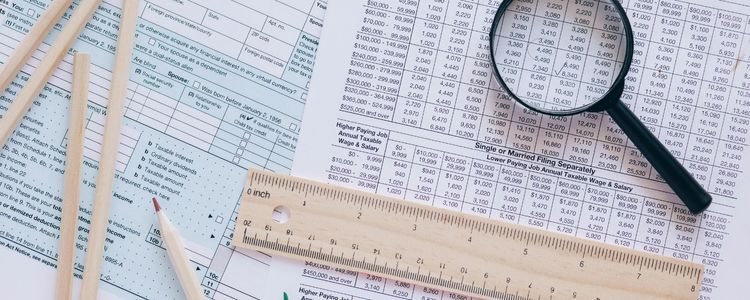Understand the 1031 Exchange Process
For real estate investors, strategically managing capital gains is fundamental to building long-term wealth. A 1031 exchange is one of the most powerful tools available for achieving this, allowing you to defer capital gains taxes by selling an investment property and reinvesting the proceeds into another.
This guide provides a detailed overview of the 1031 exchange process, its requirements, and its strategic applications for investors. As a realtor specializing in the Aspen market, I, Ryan Schwartz, work with clients to navigate these complexities and identify properties that align with their financial goals.
Disclaimer: This article is for informational purposes only and does not constitute tax or legal advice. Always consult with a Certified Public Accountant (CPA) or tax professional to understand how these rules apply to your personal situation.
What is a 1031 Exchange?

A 1031 exchange, named after Section 1031 of the U.S. Internal Revenue Code, allows an investor to sell an investment property and purchase a new "like-kind" property while deferring capital gains taxes. Instead of paying taxes on the profit from the sale, you can roll the entire proceeds into a new investment. This is a tax-deferral strategy, not a tax-free one, meaning taxes are postponed until the replacement property is sold without another exchange.
By deferring taxes, investors keep more of their capital working for them, which can accelerate portfolio growth, increase buying power, and facilitate entry into higher-value markets like Aspen.
The 1031 Exchange Process: A Step by Step Guide
Successfully executing a 1031 exchange requires adherence to a strict set of rules and timelines. Here is a breakdown of the key steps involved.
Step 1: Sell Your Investment Property
The process begins with the sale of your current investment property, also known as the "relinquished property." It is critical that this property has been held for investment or business use, not as a primary residence. Once you have a buyer, the sale proceeds to closing.
Step 2: Engage a Qualified Intermediary (QI)
You cannot personally receive or have control over the funds from the sale. To comply with IRS regulations, the proceeds must be held by a neutral third party known as a Qualified Intermediary (QI). The QI will hold the funds in escrow and transfer them directly to the seller of your new property at closing. Selecting a reputable QI is a crucial step, and your real estate agent or attorney can often provide trusted referrals.
Step 3: Identify a Replacement Property
Once the relinquished property is sold, two critical deadlines begin. The first is the 45-day identification period. Within 45 days of the sale, you must formally identify potential replacement properties in writing and deliver this list to your QI. You can identify properties under one of the following rules:
- Three-Property Rule: Identify up to three properties of any value.
- 200% Rule: Identify any number of properties, as long as their combined fair market value does not exceed 200% of the relinquished property's value.
- 95% Rule: Identify any number of properties, but you must acquire at least 95% of the total value of the properties identified.
Step 4: Purchase the Replacement Property

The second deadline is the 180-day closing period. You must close on one or more of the identified replacement properties within 180 days of the original sale date, or by the due date of your tax return for that year, whichever is earlier. To fully defer all capital gains taxes, the replacement property's value must be equal to or greater than the value of the property you sold.
Step 5: Ensure the Property is "Like-Kind"
The IRS defines "like-kind" broadly for real estate (again, please consult CPA). Most properties held for investment or business use will qualify. For example, you can exchange a rental condo for a commercial building, a parcel of land for a multi-family apartment complex, or a vacation rental in one state for a luxury home in another. This flexibility allows investors to diversify their portfolios by asset type or geographic location.
Step 6: File with the IRS
After the exchange is complete, you must report it to the IRS by filing Form 8824, "Like-Kind Exchanges," with your federal income tax return for the year the exchange occurred.

Strategic Benefits for Real Estate Investors
A 1031 exchange offers several advantages for investors looking to expand their portfolios.
- Tax Deferral and Increased Buying Power: By postponing capital gains taxes, you can reinvest the full proceeds from your sale. This increases your purchasing power, allowing you to acquire a more valuable asset.
- Portfolio Growth and Diversification: The exchange process facilitates portfolio upgrades. An investor could sell a smaller rental property and move into a multi-unit building to increase cash flow or exchange a property in one market for one in a high-growth area like Aspen.
- Estate Planning Advantages: If you hold the replacement property until you pass away, your heirs may receive it on a "stepped-up" basis. This means the property's cost basis is adjusted to its fair market value at the time of your death, potentially eliminating the deferred capital gains tax liability for them.
- Consolidation or Management Relief: Investors can use a 1031 exchange to consolidate multiple properties into a single, larger asset or transition from high-maintenance properties to more passive investments.
Potential Challenges to Consider
While the benefits are significant, 1031 exchanges come with complexities and risks.
- Strict Deadlines: The 45-day identification and 180-day closing periods are inflexible. Failing to meet these deadlines will disqualify the exchange and trigger an immediate tax liability.
- Finding a Suitable Property: In competitive markets, finding and closing on a suitable replacement property within the required timeframe can be challenging.
- Complex Rules: The process requires careful coordination between your realtor, CPA, attorney, and QI. Any misstep can result in a failed exchange.
Your Next Move in the Aspen Market
A 1031 exchange is a strategic maneuver that can significantly enhance your real estate investment portfolio. By allowing for tax-deferred growth, it provides a pathway to upgrade properties, diversify holdings, and enter premier markets like Aspen. However, the process demands careful planning and expert guidance.
If you are considering a 1031 exchange to acquire property in Aspen, contact me today. With my experience as a local realtor and the resources at Aspen.RealEstate, I can help you navigate the market and identify the right property to maximize both your lifestyle and investment objectives.











